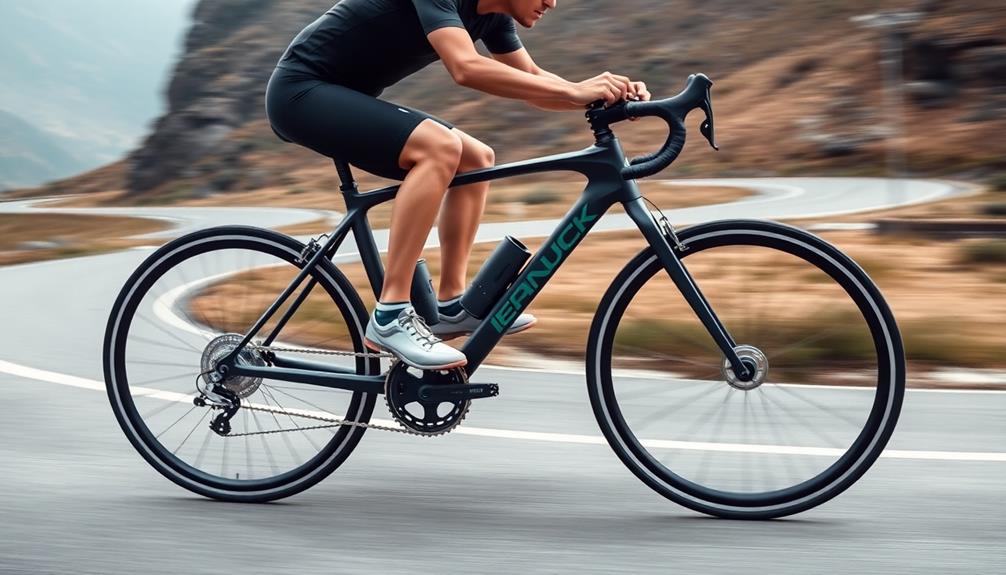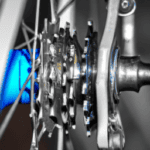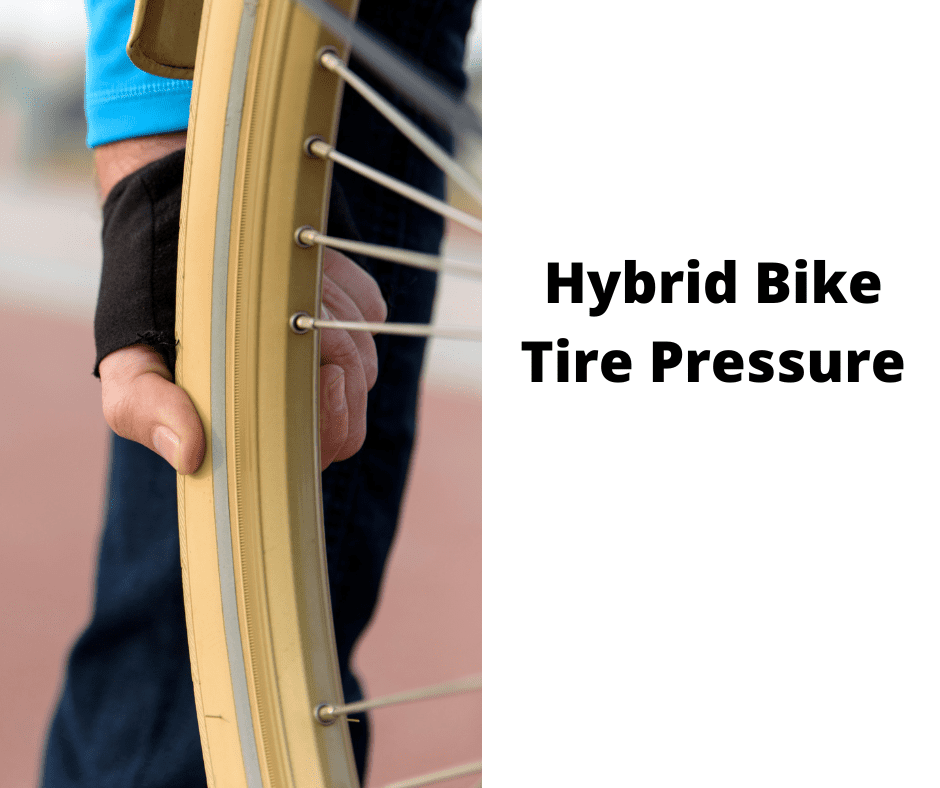Finding the right gearing system for your hybrid bike is essential for maximizing your riding experience. You'll need to evaluate the terrain you're tackling. If you ride on hills, aim for a derailleur system with multiple gears for climbing. For flat surfaces, a single-speed or internally geared hub can work well with less maintenance. Understanding gear ratios is key too—lower ratios assist with uphill climbs, while higher ratios boost speed. Regular maintenance and smooth shifting techniques will enhance your ride. By reviewing your habits and terrain, you can achieve the perfect balance for your bike. There's much more to explore on this topic!
Key Takeaways
- Choose a gearing system based on your terrain: single-speed for flat areas, derailleur systems for hilly terrains, and internally geared hubs for low maintenance.
- Understand gear ratios: lower ratios enhance climbing ability while higher ratios increase speed on flat surfaces.
- Regular maintenance, including cleaning and lubrication, is crucial for optimal performance and longevity of bike components.
- Anticipate terrain changes and shift gears smoothly to maintain a steady cadence of 70-90 RPM for efficient riding.
- Popular setups range from 7 to 27 gears, with 21-speed configurations offering a versatile balance for varied riding conditions.
Importance of Gearing in Hybrid Bikes
The gearing system in a hybrid bike plays an essential role in your riding experience. With a typical range of gears between 7 to 27, you can easily adapt to various terrains and conditions. For instance, when you're climbing steep hills, lower gear ratios give you the torque needed to power up without exhausting yourself.
On the other hand, higher gear ratios come in handy for achieving faster speeds on flat terrain. Additionally, just as color accuracy impacts overall image quality, the right gearing can considerably enhance your biking performance by providing a smoother and more efficient ride.
Effective gear selection directly impacts your riding efficiency. By shifting gears appropriately, you can maintain a comfortable cadence, which helps prevent fatigue during long rides. Whether you're using a derailleur system with up to 21 speeds or a simpler internal hub with 3 or 7 speeds, understanding how to utilize the range of gears is fundamental for maximizing your performance.
Regular maintenance of your gearing system is also essential. Keeping your gears clean and properly adjusted guarantees smooth shifting, allowing you to shift seamlessly between gear ratios.
Paying attention to these aspects will enhance your cycling experience, making your rides more enjoyable and productive.
Types of Gearing Systems

Exploring the types of gearing systems available for hybrid bikes reveals two primary options: derailleur-based systems and internally geared hubs. Each has unique features that cater to different riding styles and conditions.
| Gearing System | Number of Gears | Best For |
|---|---|---|
| Derailleur Systems | 7 to 27 gears | Climbing capabilities |
| Internally Geared Hubs | 3, 7, or 8 speeds | Flat roads and maintenance |
| Single-Speed Bikes | 1 gear | Casual riding |
Derailleur systems provide a wide range of gear configurations, allowing you to easily shift gears and tackle varying terrains. This flexibility is great for steep climbs and diverse conditions. In contrast, internally geared hubs offer simplicity and protection from the elements, making them ideal for commuting or casual rides. These systems typically require less maintenance and excel on flat roads.
Ultimately, the choice between derailleur and internally geared systems can greatly impact your riding experience. Consider your typical routes and riding style to find the perfect balance for your hybrid bike.
Understanding Gear Ratios
When choosing a gearing system for your hybrid bike, understanding gear ratios is key to enhancing your ride. Gear ratios are calculated by dividing the number of teeth on the chainring by the number of teeth on the rear cog. This ratio influences both speed and torque, making it essential for your riding experience.
For hybrid bikes, a typical gear ratio ranges from 0.5 to 3.25. Lower ratios offer easier gears, boosting your climbing capabilities, while higher ratios allow for faster speeds on flat terrain. Additionally, experimenting with gear choices can lead to an improved cycling experience, much like how numerous varieties available can excite coffee enthusiasts.
Knowing how to select the right gear ratio can greatly impact your riding efficiency. For example, a gear ratio of 32 (rear) / 28 (front) gives you a ratio of 1.14, which is ideal for tackling varied terrains.
Ideal gear ratios for hybrid bikes usually suggest a range of 7 to 27 gears, balancing the need for versatility across different riding conditions. By understanding these ratios, you can tailor your bike's gearing system to match your fitness level and the paths you ride, ensuring a smoother and more enjoyable cycling experience.
Maintenance for Optimal Performance

To keep your hybrid bike running smoothly, regular cleaning and lubrication of the chain and gears are key.
Implementing regular grooming practices for your bike, much like control pet hair like a pro, guarantees all moving parts are free from dirt and well-lubricated for peak performance.
You'll want to establish a routine that guarantees all moving parts are free from dirt and well-lubricated for peak performance.
Regular Cleaning Practices
Regularly cleaning your hybrid bike is essential for peak performance and longevity. By implementing effective regular cleaning practices, you can guarantee that your chain and gears function at their best. Start by using a degreaser to remove dirt and grime from the drivetrain components. After cleaning, don't forget to lubricate the chain; doing this every 100-150 miles helps reduce friction and improves your ability to shift gears smoothly.
Here's a quick reference table to guide your cleaning routine:
| Task | Frequency |
|---|---|
| Clean chain & gears | Every 50 miles |
| Lubricate chain | Every 100-150 miles |
| Inspect derailleur | Monthly |
| Check cable tension | Every ride |
Additionally, inspect the derailleur periodically to prevent debris buildup that can cause misalignment. Regularly check cable tension and housing to guarantee smooth gear changes and maintain gear efficiency. Keeping an eye on these aspects will help you enjoy a smoother ride and prolong the life of your hybrid bike. Remember, a well-maintained bike is a joy to ride!
Lubrication Techniques Explained
Effective lubrication techniques are vital for maintaining your hybrid bike's performance and longevity. Regularly lubricating the chain, gears, and derailleur pivots reduces friction, guaranteeing smooth shifting. Aim to perform this maintenance every 100-200 miles or after riding in wet conditions.
Additionally, consider how a well-lubricated bike can enhance your overall riding experience, similar to how robot vacuums can improve home hygiene.
Start by using a high-quality bicycle-specific lubricant. Apply it sparingly to the chain, avoiding excess that can attract dirt and grime. First, clean your chain with a degreaser, then apply the lubricant while pedaling backward. This method guarantees even distribution across the entire length.
Don't forget the derailleur! Check and lubricate its moving parts, including the jockey wheels and pivots. This step is significant for maintaining precise shifting performance and preventing wear on your drivetrain components.
Regular inspections and lubrication not only enhance your bike's performance but also extend the lifespan of its gearing system. By keeping everything well-lubricated, you're promoting maximum efficiency, making your rides smoother and more enjoyable.
Tips for Effective Gear Shifting

When you're riding, anticipating terrain changes can make a big difference in your gear shifting.
Understanding the costs associated with bike maintenance, similar to the cost of home security systems, guarantees you're prepared for any necessary upgrades or repairs.
Shifting gears smoothly while maintaining a steady cadence helps you tackle hills and flat stretches more efficiently.
Anticipate Terrain Changes
Many riders underestimate the importance of anticipating terrain changes, but it can make a significant difference in your cycling experience. By shifting to lower gears before approaching hills or obstacles, you'll find pedaling becomes easier, improving your climbing efficiency. Maintaining a steady cadence of around 70-90 RPM is essential when shifting; this helps you use energy effectively and reduces fatigue.
Here's a quick reference to help you with gear shifting:
| Terrain Type | Recommended Gear | Ideal Cadence |
|---|---|---|
| Flat Surfaces | Higher Gears | 70-90 RPM |
| Gradual Inclines | Lower Gears | 70-90 RPM |
| Steep Climbs | Lowest Gears | 70-90 RPM |
| Mixed Terrain | Gradual Shifts | 70-90 RPM |
Familiarizing yourself with your bike's gear indicators can enhance your riding strategy. Knowing which gears correspond to climbing and flat terrain will improve your overall riding position. Regular practice on flat surfaces helps develop an instinctive understanding of when to shift gears based on upcoming terrain changes. This proactive approach not only prevents chain strain but also guarantees smoother shifts as you ride.
Smooth Transition Techniques
Anticipating terrain changes sets the stage for smooth gear shifting, which is essential to maintaining your momentum and comfort while riding. To achieve this, always shift gears while keeping a steady pedaling cadence. This guarantees smooth shifts and prevents excessive strain on your chain and derailleur.
As you approach hills or obstacles, remember to shift to lower gears in advance. This technique allows for easier climbing and helps maintain momentum.
Additionally, it's important to practice changing gears on a gravel bike to understand how different terrains affect your gear choices. Utilizing gradual shifts rather than abrupt changes is vital. Abrupt shifts can lead to chain strain and potentially damage your bike components, shortening their lifespan.
Familiarize yourself with your bike's gear numbering system; lower numbers are for easier climbs, while higher numbers are for speed on flat terrain.
Practice your shifting techniques on flat surfaces to build confidence and instinct for selecting the appropriate gear based on various riding conditions.
Maintain Steady Cadence
A steady cadence is vital for effective gear shifting on your hybrid bike. Aim for a cadence of around 70-90 RPM to maximize your energy efficiency and performance.
As you ride, anticipate changes in terrain and shift to a low gear before encountering inclines, similar to how tuning can enhance engine performance in vehicles like the Ford Fusion Tuning. This allows for smoother shifts and better control while climbing, making your ride more efficient.
Practicing gear shifting on flat surfaces will help you develop a feel for how your bike responds. This skill is important when you face more challenging conditions.
When shifting, gradually move through the gears instead of jumping multiple gears at once. This approach prevents chain strain and promotes the longevity of your drivetrain.
Stay aware of your current gear to avoid inefficient pedaling. Shift to higher gears on flat terrain for maximum speed and revert to lower gears when approaching obstacles or steep climbs.
By mastering these techniques, you'll maintain a steady cadence, enhance your riding experience, and guarantee your gear system performs at its best.
With practice, effective shifting will become second nature, allowing you to tackle any terrain with confidence.
Choosing the Right Gearing Setup

When it comes to choosing the right gearing setup for your hybrid bike, understanding your riding habits and terrain is essential. If you primarily ride in flat areas, a single-speed bike might suit you. However, if your rides often involve hilly terrains, a multi-speed system is a must.
Hybrid bikes typically feature gearing setups ranging from 7 to 27 gears, with 21-speed configurations being popular for versatility. Additionally, consider how the principles of tuning, such as optimizing performance through adjustments, can also apply to your bike's gearing setup, providing a smoother ride experience.
GMC tuning emphasizes the importance of customization for individual preferences, which can be mirrored in selecting gears based on your unique cycling needs.
Consider the benefits of internal hub gears, which provide low maintenance and simplicity, making them ideal for urban commuting. If you prefer a wider gear range for tackling steep climbs or achieving higher speeds on flat roads, a derailleur-based system will serve you better.
Understanding gear ratios is vital as well. Lower ratios, like 22/32, make for easier climbing, while higher ratios enhance speed on flat roads, optimizing your performance according to riding conditions.
Assess your needs carefully—whether you prioritize easier climbing or speed—so you can select the perfect gearing setup for your hybrid bike. This way, you'll enjoy a smoother and more efficient riding experience.
Frequently Asked Questions
How to Use Gears on a Hybrid Bike?
To use gears on your hybrid bike, shift while pedaling to match the terrain. Lower gears help you climb, while higher gears increase speed on flat surfaces. Anticipate changes and adjust gears before reaching obstacles.
What Is the Gear Ratio of a Hybrid Bike?
Understanding a hybrid bike's gear ratio is essential. It balances climbing steep hills and speeding on flat surfaces. You'll feel empowered tackling any terrain, knowing how to optimize your ride with the right gear setup.
How Do I Choose a Gear Ratio for My Bike?
To choose a gear ratio for your bike, consider the terrain you'll ride on. Test different ratios to find what feels comfortable, balancing easier climbs with speed on flat surfaces for your riding style.
What Gear Combination Is Best for Going Uphill?
When facing steep hills, you'll want lower gear combinations like a 22-tooth chainring with a 32-tooth cog. Shifting early lets you maintain cadence, making climbs easier and your ride more enjoyable overall.
Conclusion
To sum up, finding the right gearing system for your hybrid bike can make all the difference in your ride. Did you know that cyclists can save up to 30% more energy with the right gear ratio? By understanding your options and maintaining your system, you'll enjoy smoother rides and tackle various terrains with ease. So, take the time to choose and care for your gearing setup—it's worth it for the added comfort and efficiency on your journeys!
















